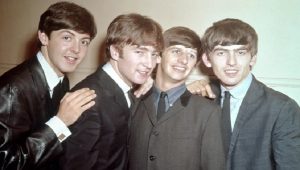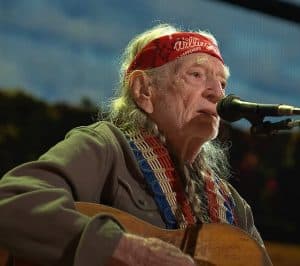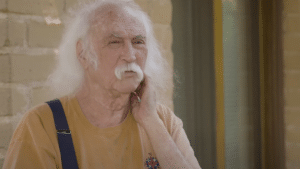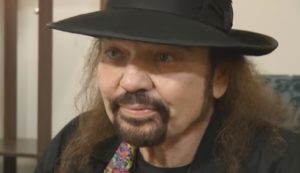12 Secret Facts About Schoolhouse Rock

via us chronicle / Youtuybe
Remember Saturday mornings fueled by sugary cereal and a marathon of cartoons? That carefree time might have gotten a little more educational than you bargained for with the arrival of Schoolhouse Rock! Disguised as catchy tunes and vibrant animation, these short cartoons snuck valuable lessons past unsuspecting kids.
Debuting in 1973, Schoolhouse Rock! became a staple on ABC’s Saturday morning lineup. Over a decade, it tackled subjects like math, grammar, civics, and science, transforming them into unforgettable animated music videos.
Even today, Gen Xers can likely belt out tunes like “I’m Just a Bill” or “Conjunction Junction” without missing a beat.
Schoolhouse Rock! wasn’t just catchy, it was impactful. This innovative format not only entertained kids but also left a lasting impression on viewers who are now doctors, lawyers, and politicians.
https://twitter.com/ThatEricAlper/status/1766086467388866816
Schoolhouse Rock! almost became another cheesy ad
David McCall, president of the McCaffrey and McCall advertising agency, had a lightbulb moment during a family vacation in the early 1970s. He noticed his son readily absorbing the lyrics of popular rock bands, yet struggling with multiplication tables. This sparked an idea: could catchy music make learning fun and effective for kids?
McCall initially envisioned an educational rock album, particularly one focused on math. He enlisted an agency jingle writer to create a song about multiplication tables set to music. However, the result felt too similar to a cheesy commercial jingle, and McCall knew he needed something more engaging.
Finding the ‘magic number’
David McCall wasn’t sold on the first attempt at a multiplication song. Seeking a different approach, his colleague George Newall recommended Bob Dorough, a jazz pianist with impressive connections (Miles Davis, anyone?). Dorough, unlike other contenders, took the “rock” element seriously.
“They came up with simple doggerel,” he recalled, contrasting his approach to the competition’s. To capture the essence of “Schoolhouse Rock!”, Dorough immersed himself in math, magic, and even dabbled in the occult – a dedication that resulted in the iconic “Three is a Magic Number” after three weeks of work.
Getting schooled by Schoolhouse Rock!
The creators of Schoolhouse Rock! weren’t just shooting from the hip. They prioritized educational accuracy and effectiveness from the get-go. McCall leveraged his connections at the Bank Street College of Education, a prestigious New York education institution.
To gauge its viability, they presented a demo of “Three is a Magic Number” to students in city and suburban schools. Bank Street not only endorsed its ability to reinforce multiplication tables, but also saw its potential to introduce new concepts.
This seal of approval from a respected educational body paved the way for Schoolhouse Rock! production. In fact, a Bank Street rep became a long-term advisor, ensuring educational soundness. Each short underwent a week-long review process by this expert before recording could begin.
From record deal to Saturday morning sensation
Although Dorough’s catchy “Three is a Magic Number” kickstarted the project, the original plan for Schoolhouse Rock! wasn’t television. McCall envisioned it as an educational record paired with a book, pitched as “Multiplication Rock”. However, publishers weren’t interested.
A stroke of luck came when someone at McCaffrey and McCall realized they had an ABC client. Storyboards were created for “Three is a Magic Number” and presented to Michael Eisner, then ABC’s vice president of Children’s Programming (and future Disney president).
Eisner brought in animation legend Chuck Jones (of Roadrunner and Grinch fame) who was impressed and suggested it for his Saturday morning show Curiosity Shop. This unexpected turn of events led to the very first Schoolhouse Rock! segment airing on Curiosity Shop – almost two years before it became a standalone hit.
Schoolhouse Rock! hits recorded in a flash
“Schoolhouse Rock!” wasn’t just catchy tunes – it showcased a surprising range! “Conjunction Junction” (1973) is a perfect example. This funky folk song uses a train metaphor to explain how conjunctions like “if”, “and”, and “but” connect words. It’s a stark contrast to “I’m Just a Bill”, a soul-tinged story song patiently explaining the journey of a bill becoming a law.
Despite their differences, both songs share the same talented team. Jack Sheldon, an accomplished jazz singer and trumpet player, provided lead vocals on both tracks. He was backed by a group of Los Angeles session musicians, including Leroy Vinegar (bass), Stuart Scharf (guitar), Teddy Edwards (saxophone), Nick Ceroli (drums), and Dave Frishberg (piano). Interestingly, both “Conjunction Junction” and “I’m Just a Bill” were recorded on the same day during the same session!
ABC almost blocked this Schoolhouse jam
While Schoolhouse Rock! aimed to educate young viewers with catchy tunes, it wasn’t without its challenges. The series, known for its squeaky-clean content, faced network pushback on a couple of occasions.
The 1973 episode “Naughty Number Nine” almost didn’t see the light of day. This quirky song used a cigar-smoking cat named Naughty Number Nine to teach kids about the number nine. ABC’s censors balked at the smoking scene, nearly banning the episode. However, the creators successfully argued that the smoking helped establish Naughty Number Nine as a mischievous character.
Another episode, “Three-Ring Government”, suffered a similar fate. This mid-1970s song explained the three branches of government (executive, judicial, and legislative) through a child’s dream of a circus trilogy. Fearing comparisons to a circus might offend the FCC and Congress, ABC shelved the episode until 1979.
Schoolhouse Rock! goes beyond classrooms
The creators of Schoolhouse Rock! aimed to make learning fun and catchy, and their success extended beyond elementary school classrooms. McCall’s vision of using pop-rock to teach proved surprisingly effective, even for adults.
One example is the iconic “I’m Just a Bill” (1975). This song explains the journey of a bill becoming a law. Congressional offices and lobbyist groups were known to request tapes of this episode to educate staffers on the legislative process.
“Schoolhouse Rock!” even found its way into medical schools. The 1979 song “Telegraph Line”, which uses a catchy tune to explain the nervous system, was used by the University of Michigan Medical School and Columbia College of Physicians and Surgeons to teach first-year students.
https://twitter.com/BigChokka/status/1766137347975135571
It almost became “Scholastic Rock”
The catchy title Schoolhouse Rock! wasn’t always the plan. Originally, the show was called “Scholastic Rock”, a name that clearly reflected its educational and musical nature. However, there was a snag.
A well-established company named Scholastic, known for children’s books and educational materials, already existed. With a similar focus on learning, Scholastic saw “Scholastic Rock” as a potential trademark infringement. Fearing a lawsuit, the show’s creators opted for “Schoolhouse Rock!” instead. Interestingly, the music publishing arm of the project kept the original title, “Scholastic Rock”.
The lost song of Schoolhouse Rock!
Not all “Schoolhouse Rock!” songs made it to air. Some, like the 1974 “Grammar Rock” segment “Verb: That’s What’s Happening”, replaced earlier concepts. Bob Dorough knew action-oriented verbs would translate well to animation.
Originally, the show planned to animate a song by “I’m Just a Bill” writer Frishberg called “A World Without Verbs”. This song, however, posed a challenge. The very lack of verbs, meant to represent inaction, made it difficult to animate in a visually engaging way. Ultimately, “A World Without Verbs” never got a full production, leaving it a lost relic in the history of Schoolhouse Rock!
The voices behind some of the iconic lines and songs
Schoolhouse Rock! was sometimes a family affair! In the 1974 “Grammar Rock” short “Interjections!”, the final line is a little girl’s disappointed cry of “Darn! That’s the end?” This voice belonged to Lauren Yohe, who was just six years old at the time, and also happened to be the daughter of lead designer Tom Yohe!
It wasn’t the only time family members lent their voices. In the 1977 “History Rocks” segment “Fireworks”, the voices reciting parts of the Declaration of Independence belonged to producer Radford Stone’s children: Charlotte (10 years old) and Ian (12 years old).
Even “I’m Just a Bill” featured a father-son duo – Jack Sheldon sang the lead and his son John voiced the young boy learning about the law-making process.
Schoolhouse Rock! lived on in different forms
The 1990s saw a resurgence of interest in Schoolhouse Rock! In 1993, Schoolhouse Rock Live debuted in Chicago. This stage show took the educational cartoon collection to a whole new level.
It cleverly wove the show’s classic songs, like “Conjunction Junction” and “I’m Just a Bill,” into a narrative about a nervous new teacher who finds inspiration from the characters popping out of his TV. The show was a hit, running for eight months to sold-out crowds. A shorter version even became popular for school productions.
Schoolhouse Rock! also found itself rocking out in 1996. Lava Records, a subsidiary of Atlantic Records, released a tribute album titled Schoolhouse Rock! Rocks. This album featured popular alternative rock bands and rappers covering classic Schoolhouse Rock! songs from the 70s. Bands like Pavement and Blind Melon put their own spin on favorites like “No More Kings” and “Three is a Magic Number”.
Nostalgia saved Schoolhouse Rock!
Schoolhouse Rock! enjoyed a successful 12-year run on Saturday mornings, but in 1985, ABC decided to end the show. Unlike many long-running series, Schoolhouse Rock! didn’t seem to leave a lasting legacy. The animation cels were discarded, musical arrangements were lost, and even the master audio tapes went missing (later to be found in a barn!).
However, the early 1990s brought a wave of nostalgia that saved Schoolhouse Rock! from obscurity. A 1990 symposium on education revealed that college students still remembered the show fondly. This, along with student petitions urging ABC’s revival, led to a comeback in 1994 with a new series called “Money Rock” that tackled financial literacy.












